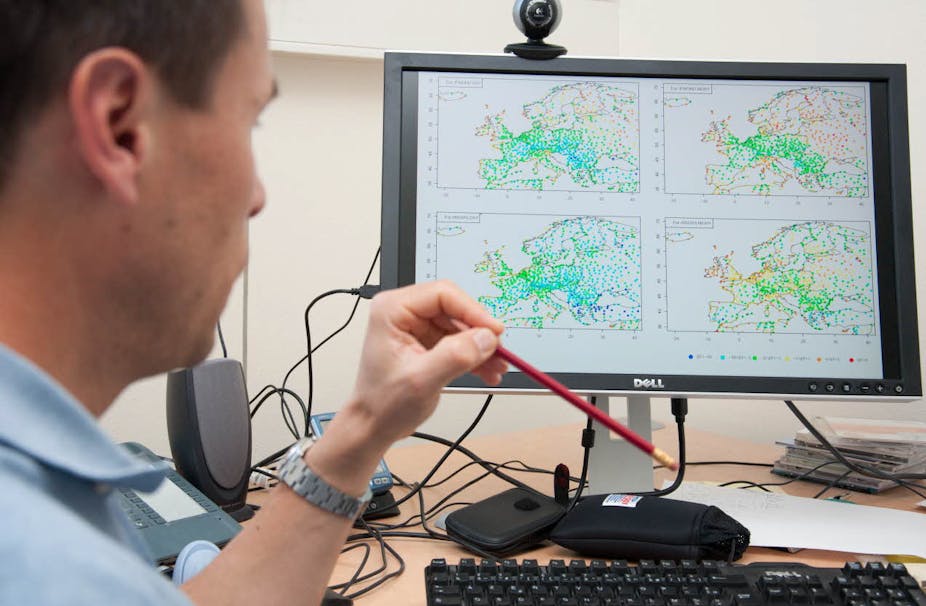To respond to major challenges, especially in times of conflict, national leaders have often appealed to the scientific community. The Manhattan Project is one of the best illustrations: During World War II, the US government mobilised the most eminent scientists of the day to develop the atomic bomb – including those most opposed to its use – ahead of Nazi Germany. Other examples include the leadership of De Gaulle in France and Deng Xiaoping in China, for whom the goal of rebuilding national leadership was the driving force behind ambitious scientific policies.
Today countries around the world are faced with the challenge of climate change. The IPCC report released in October 2018, shows that the objective of limiting global warming to 1.5°C is achievable, but requires rapid, profound and unprecedented change in all sectors.
Faced with such an emergency, it is tempting to think that the scientific community is fully mobilised, but this is currently far from the truth. Like states, businesses and other economic interests, scientific institutions are more concerned with preserving their existing models than directly engaging with the fight against climate change, which is intrinsically global.
Digital upheaval
The crisis facing scientific institutions worldwide is for part due to the digital revolution. It has considerably modified not only the modes of transmission of knowledge (and therefore of teaching), but also the modes of its production (and therefore research). The ability to learn remotely, lifelong, and with material from anywhere in the world, is increasingly offered by emerging companies. New digital technologies have been developed by labs belonging to major digital platforms, created only recently. The growing amount of data collected (and mainly by private interests) are changing both the working methods of many scientists as well as the conditions of access to information sources, which are mostly under the control of digital platforms.
It is therefore a major concern for academic institutions to find their way through all this turbulence, as is social stability for governments and the maintenance of a business model for companies.
Partitioning into academic disciplines
The other difficulty encountered by scientific institutions is disciplinary compartmentalisation, which affects the entire community. Historically this was a highly efficient mode of organisation, with the development of methodologies specific to each discipline, making possible a deepening of knowledge. This model seems to have reached its limits today, as the challenge we face requires global and holistic approaches.
The current academic models struggles to take into account the interdependencies between a broad range of phenomena – in particular between nature, society and technology – that requires crossing disciplinary boundaries. The institutions are well aware of this, as shown by the efforts in favour of interdisciplinary studies.
But in practice, these efforts remain limited. Moreover, the essential reason of the difficulty of academic institutions has to be found elsewhere. The ability to focus on issues of such novelty and urgency as climate change requires full mobilisation. Moreover, the co-production of solutions with the actors involved on the ground is essential. In October 2018, the journal Nature devoted a special issue to this insufficiently encouraged mode of research.
Three possible directions
To respond to the state of emergency highlighted by the IPCC reports, we can identify three avenues for transformation needed in the academic world.
Give primacy to questions. What this means is tackling questions that, however ill-defined they might be from the point of view of established scientific disciplines, are nevertheless essential. This is often the case of questions whose formulation is simple and understandable by all, but whose answers are of an immense complexity. Understanding how to adapt society to the constraints of the natural ecosystem is an example of such a simple question – just like translating the IPCC recommendations into public policies.
Extend the missions of academic institutions beyond their current competences. Today, in addition to teaching and the advancement of knowledge, they are mainly oriented toward transfer of knowledge to private companies. This transfer and co-construction should be generalised though to all actors in society, to enhance the capacity to adapt to climate change and develop its mitigation.
Academic institutions must work to be exemplary, as the stakes demand. Research must respond to social expectations and help cope with the tremendous anxiety that ecosystem changes are causing.
Innovative structures
Some recent developments are bringing hope. In the last 20 years, new independent institutions have been created to meet these objectives. These include the Stockholm Resilience Centre, created in 2007, which conducts research and advice directly political authorities; and the Research Institute on Humanity and Nature in Kyoto.
Some institutions have also invested in measuring their own impact on natural ecosystems, with the goal of reducing, for example, their carbon footprint. Organisations such as the Association for the Advancement of Sustainability in Higher Education and the Labos1point5 initiative in France are sharing already widely recognised methodologies.
If humanity is to change collectively and profoundly, as recommended by the IPCC, every organisation must impose those changes to itself. Academic institutions in the first place: they have the scientific means to do so and they have the social responsibility.


